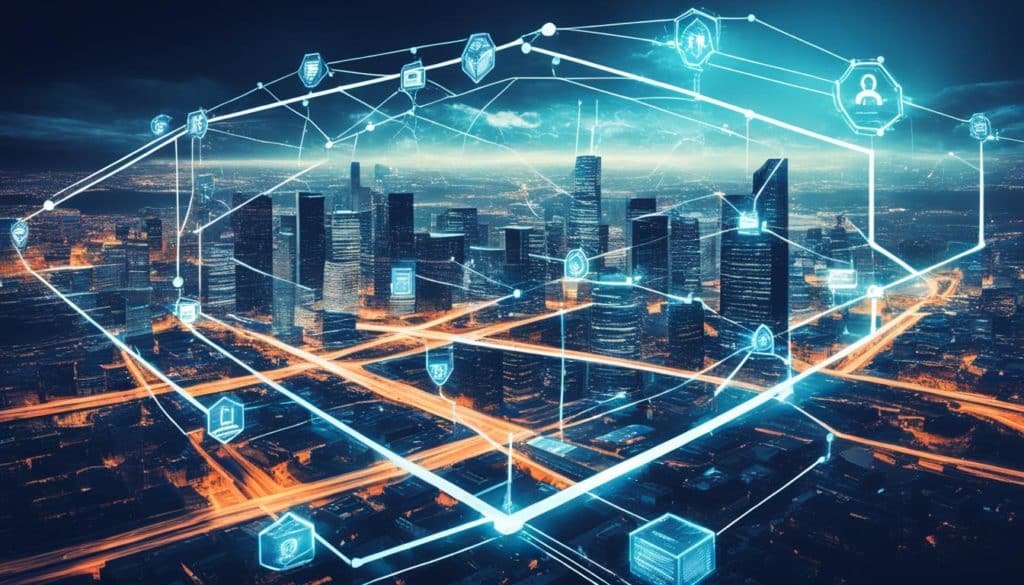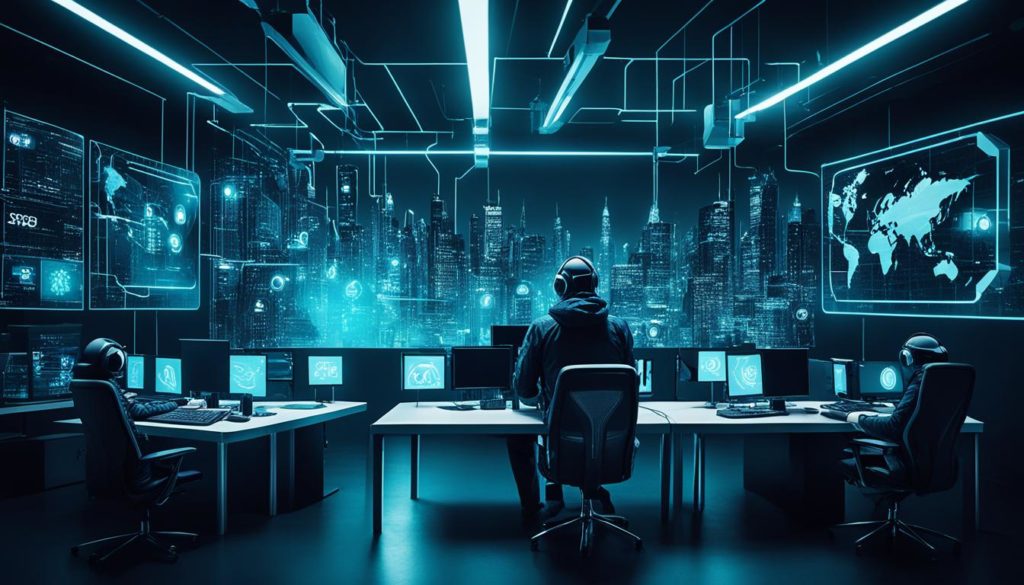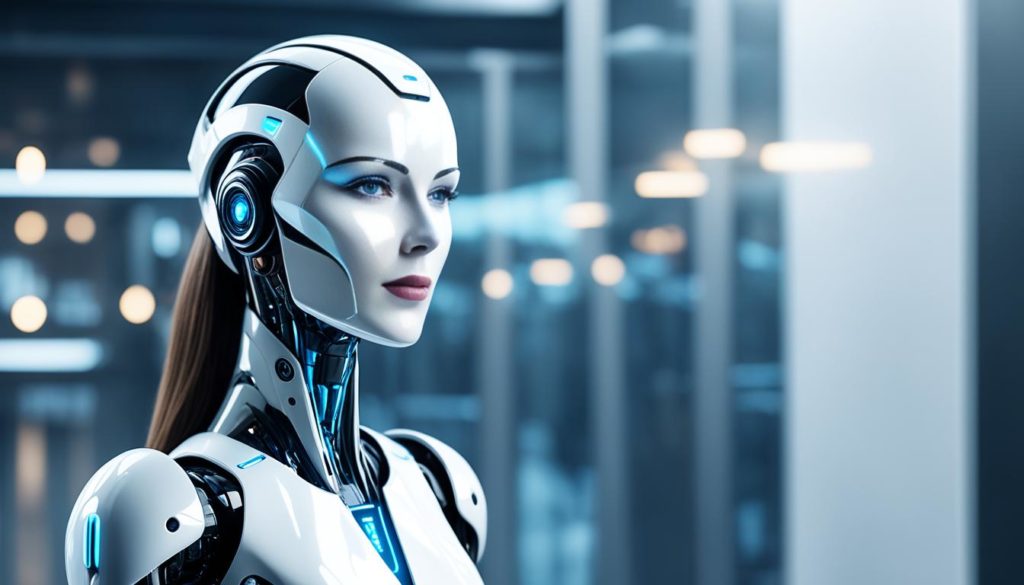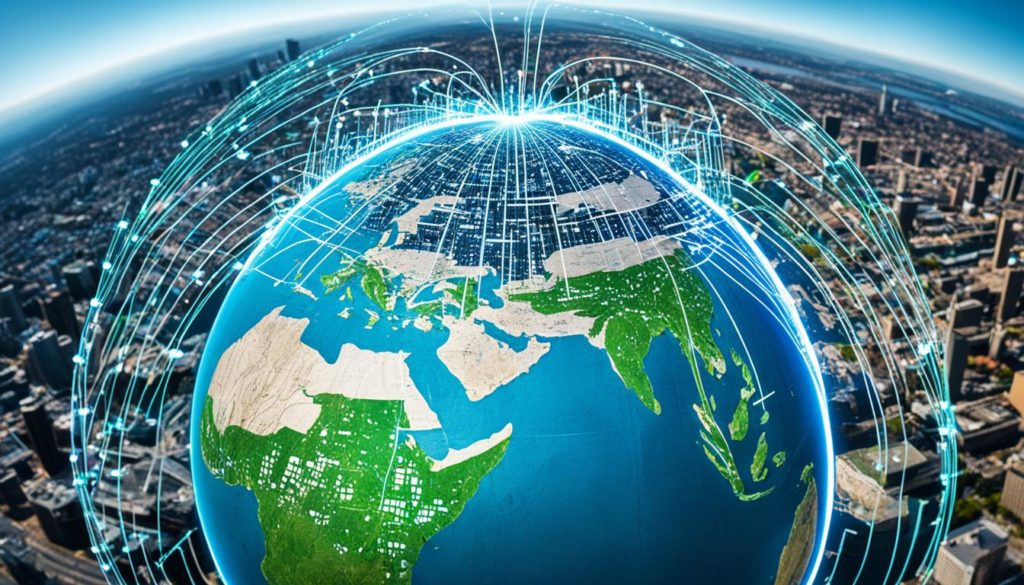
Did you know that cybercrime could cost the world $6 trillion a year by 2023? Cybersecurity Ventures shared this shocking forecast. It shows the importance of strong cybersecurity in today’s digital age. Businesses, government bodies, and organizations need to protect their data from increasing online threats.
Cybersecurity trends change all the time, and it’s important to keep up. As 2023 unfolds, new tech advancements are changing how we protect our data. It’s essential to learn about these changes. Taking classes from industry pros can help us build stronger defenses against cyber attacks.
Key Takeaways
- Cybercrime damages are projected to reach $6 trillion annually by 2023.
- Digital transformation across sectors underscores the need for robust cybersecurity.
- Understanding current cybersecurity trends is critical for protection.
- Technological advancements are continuously reshaping the cybersecurity landscape.
- Industry expert-led courses can enhance our cybersecurity knowledge and skills.
The Evolving Landscape of Digital Threats
The digital threat landscape is rapidly changing. Cyber attack methods like malware, ransomware, and DDoS attacks are becoming more complex. This complexity makes today’s cybersecurity threats more challenging. Now, not just big companies and government bodies, but small businesses, healthcare, schools, and even individuals are in danger.
Nations are deeply changing the cyber threat scene. They engage in cyber spying and warfare, bringing a sinister aspect to the scene. This means the world needs to join forces to fight these dangers. Countries, police forces, and cybersecurity teams must share intel and hunt down these cybercriminals together.
Supply chain attacks are more common, showing us the risks in connected systems. When supply chains are hit, the effects can be disastrous. Also, as the number of Internet of Things (IoT) devices grows, their weak security makes them easy marks for hackers.
Attackers are also using AI and machine learning to up their game. They automate attacks, craft real-looking fake emails, and spot weak spots in their targets more easily. This makes defending against them even tougher.
Now, there are new cybersecurity rules and standards worldwide. Organizations must quickly adjust to them. Being able to respond to incidents and bounce back is key in fighting off security breaches.
Being resilient and having a solid security stance is important. With AI, phishing scams look more real than ever, so we have to be smart. Nation-states sponsoring long-term hacks are still a huge threat to everyone’s security.
A notable trend is how machine learning can spot breaches before they happen, giving cybersecurity a proactive edge. However, bad guys are using AI to create smarter malware, putting us in a constant battle for safety.
Following regulations like GDPR in Europe or CCPA in California is necessary for protecting data. As more companies use the cloud, we need strong cloud security to handle lots of data safely and prevent unauthorized access or leaks.
In steering through these digital challenges, being ready for cybersecurity impacts investments and alliances. Keeping up with new threats, using the latest tech, and adapting to changes will shape our cyber defense in the future.
Top Cybersecurity Trends in 2023
In 2023, we are seeing advanced technologies being used to lower risks and keep data safe. These steps are crucial as more organizations rely on strong strategies against digital threats.
The Role of Artificial Intelligence
Artificial Intelligence (AI) is becoming key in cybersecurity, offering faster and smarter solutions than humans can. AI in cybersecurity detects problems and fights threats very quickly. Firms using AI for security save around $1.76 million each year, showing both money and operational benefits.
However, advanced AI also means hackers can launch attacks faster, stressing the need for ongoing vigilance. The use of AI tools by hackers makes the threat bigger. Yet, the use of advanced AI by businesses is growing, with 64% adding AI to their defenses.
Mobile Device Security
Mobile security is more important than ever in 2023. Since mobile devices handle sensitive tasks, they are attractive to attackers. Greater security measures are required, including high-tech protection and multi-factor authentication.
It’s clear why strong mobile security is a must given the risks and potential data breaches. Having tight access controls and smart workflows is critical to counter these threats effectively.
Cloud Security Challenges
Though cloud services come with some security, cloud security is still a big worry. There’s an increase in cloud breaches due to more people using cloud services. Staying safe means always being vigilant and integrating zero trust architecture carefully. This method makes sure to always verify identities and control access tightly.
Companies must fight against mistakes by users and direct attacks to keep the cloud safe. Using AI for defense and having a strong backup can improve cloud security greatly. Adapting to cloud security challenges is essential for any cybersecurity plan.
Organizations should adopt comprehensive strategies for cyber resilience, focusing on the newest technology and security practices.
Emerging Trends in Cybersecurity
The digital world is changing fast, and so is the need for strong cybersecurity. We need to look closely at two things: IoT security and supply chain risks. These trends show why it’s important to be proactive and strong in our cybersecurity efforts.
IoT Security and 5G Networks
By 2026, we expect over 64 billion IoT devices. With 5G coming into play, this is a big deal for cybersecurity. These connected technologies can lead to big cyberattacks. Staying ahead of threats by beefing up security is key. Making IoT security better and consistent is essential for protection. Check this source for more.
5G brings its own security problems. Its high speed and connectivity are great but risky if not secured well. Strong security systems that can identify and respond to threats instantly are crucial. Using AI and ML to constantly watch for and adjust to threats offers hope.
Supply Chain Vulnerabilities
Our global supply chains face many cyber risks. The focus on protecting every part of the chain is higher than ever. This matters because a data breach is very costly, averaging $3.86 million.
We need to be always alert to reduce these risks. Improving cybersecurity in supply chains means closely checking our suppliers and third-party services. This not only stops financial loss but also keeps the network’s integrity safe.
New data privacy laws, like the GDPR in the EU, make supply chain security even more important. Companies have to follow these laws and keep up with new threats like advanced ransomware.
| Cybersecurity Trend | Key Aspects | Impact |
|---|---|---|
| IoT Security | 64 billion devices by 2026, AI and ML integration | Enhanced real-time threat detection and response |
| 5G Networks | High-speed, high-connectivity | Increased potential for cyberattacks |
| Supply Chain | Third-party risk management | Reduced financial impact from breaches |
| Regulatory Compliance | Compliance with tightening data privacy laws | Improved data protection practices |
Understanding the future of cybersecurity means looking at these big challenges. Staying proactive and alert is how we navigate this ever-changing field. For more insights on this topic, here’s a great read.
Cybersecurity Trends: Adapting to New Regulations
Looking into cybersecurity trends analysis for 2023, we see a big focus on organizations adjusting to new data privacy rules. By year’s end, many people worldwide will be covered by strict data protection laws like GDPR. Companies must comply to avoid big fines and protect personal information well.
Dealing with these rules means organizations must improve and automate how they follow laws. More and more, they use advanced cybersecurity tools to manage this need. Using AI and Machine Learning helps in spotting threats and keeping processes up-to-date with law changes. The latest cybersecurity trends report shows the need for new security solutions and following privacy laws closely.
There’s a higher need for cybersecurity experts now. These professionals are key in dealing with changing data protection laws and ensuring companies follow these rules. The cybersecurity trends report notes that places like the USA are investing a lot in cybersecurity to meet these rules.
A report by Allianz shows a 50% rise in ransomware victims in early 2023. This increase highlights the importance of strong ransomware defense strategies and compliance plans. The growing use of IoT devices adds new security risks, making it even more vital to follow data privacy laws.
Understanding these trends and adapting quickly helps companies stay compliant and protect their data against new threats. Staying up-to-date with cybersecurity trends analysis is crucial for keeping sensitive information safe as we move through 2023.
Conclusion
The cybersecurity trends for 2023 show us that digital threats are changing fast. This means we need to pay close attention. Companies should keep up with tech updates and use the newest cybersecurity tools. They also need to hire skilled cybersecurity experts. This is how they can fight against the many new threats that appear.
AI and 5G are changing how we use technology. Because of this, we need to always be ready to protect our digital world. Keeping our digital assets safe means always being ready to innovate and adapt. It’s important to focus on strong cybersecurity to defend against attacks.
Following the rules for cybersecurity is also very important. Staying in line with these rules helps keep organizations and their people safe. As 2023 goes on, working together to improve cybersecurity is key. By working as a team globally, we can make the digital world safer for everyone. Our goal is to be ready for the challenges that new threats bring.
FAQ
What are some of the latest cybersecurity trends to watch in 2023?
Watch out for Artificial Intelligence in cybersecurity. There’s also a rise in threats to mobile devices. Challenges from cloud services and IoT devices are growing too.
How is the digital threat landscape evolving?
The threat landscape is getting more complex every day. Sophisticated attacks and diverse targets, such as nation-states, are increasing. Supply chain attacks and AI threats are also on the rise.
Why is Artificial Intelligence significant in the realm of cybersecurity?
Artificial Intelligence is changing cybersecurity fast. It offers real-time, faster-than-human solutions. This includes fighting off AI’s own threats.
What are the primary mobile device security concerns in 2023?
Mobile devices are doing more sensitive work, raising security issues. It’s critical to ensure these devices are well protected.
What challenges are associated with cloud security?
Cloud services are secure, but not perfect. Issues can pop up from user mistakes or attacks. Using things like Zero Trust architecture helps keep data safe.
What are the emerging trends related to IoT security and 5G networks?
The arrival of 5G and more IoT devices is creating new security risks. These include possible large attacks through their connections. It’s vital to create appropriate security measures early on.
How do supply chain vulnerabilities impact cybersecurity?
More supply chain attacks mean businesses need to tighten security with third parties. It’s important to protect against cybercriminals to avoid major losses.
What changes are occurring in terms of cybersecurity regulations?
New data protection laws mean organizations have to be strict. The complexity and volume of data demand automated compliance. This requires cybersecurity pros to ensure everything is up to standard.
How does the cybersecurity trends analysis inform businesses and organizations?
Keeping up with cybersecurity trends helps organizations understand new tech and security solutions. Investing in the right talent and meeting regulatory needs is key. Staying proactive is necessary against the digital threats of today and tomorrow.
Future App Studios is an award-winning software development & outsourcing company. Our team of experts is ready to craft the solution your company needs.










